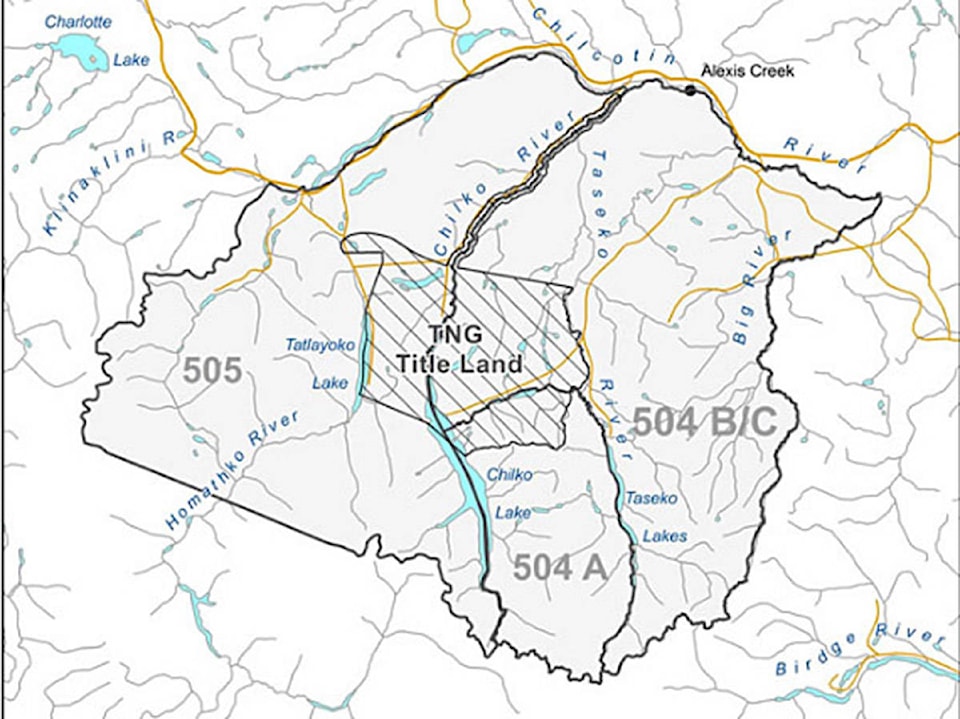A new wildlife law created by the Tsilhqot’in people is meant to protect certain animals from First Nations and non-First Nations people, said Xeni Gwet’in Chief Jimmy Lulua, whose community enacted the law effective Aug. 23, 2019.
“The law is strictly for the declared title area, which means it belongs to the Tsilhqo’tin people,” he said. “It is is for the protection of certain animals and restricts or prohibits hunting.”
Lulua said the Nulh Ghah Dechen Ts’edilhtan, wildlife law, supersedes the Limited Entry Hunting draws issued by the provincial government.
“I tell people it is not valid,” he said. “Our own people don’t even hunt moose. Well at least the respectful ones. I guess there are people in every race [who won’t abide by the law], even though we tell them not to hunt they still will.”
Read more: Cow Moose Sign founder wants LEH for antlerless moose hunt in B.C. stopped
Lulua ackowledges the anti-hunting stance will impact non-First Nations hunters with LEHs on nearby Crown land as well as guide outfitters.
Some hunters with LEHs need to travel through title land to access hunting areas, however, Lulua said they are not allowing people through.
“When it comes to certain animals like sheep, moose and mountain goat, that we are protecting, we are not going to allow anyone to come through our territory, just because it’s on the outside, that doesn’t mean it’s our only boundary. They only gave us 20 per cent of our Tsilhqot’in territory and we are going to be going after 100 per cent. Eventually we will have 100 per cent Tsilhqot’in territory.”
According to the law, however, while no one may hunt moose, there are exceptions.
A Tsilhqot’in person may hunt bull moose from Aug. 16 to Jan. 21 if they have received a valid permit issued by chief and council.
TsilhqotinNationHuntingOrder (2) by WL Tribune on Scribd
Hunting of mountain sheep, mountain goats, caribou, elk, mule deer does, mule deer bucks unless the buck has four or more points on one antler, white-tailed deer does or white-tailed deer bucks, unless the buck has three or more points on one antler is all prohibited as well.
Details of the law include encouraging people to take only the wildlife they need, use all parts of a harvested animal, share with those in need, not cause harm and suffering to wildlife and respect the capacity of the land to give so that it can continue to give and respect the traditions of the Tsilhqot’in people.
In 2018 the Ministry of Forests, Lands, Natural Resource Operations published a bulletin noting the TNG had announced the title area is not publicly available for hunting and advised hunters not to enter Tsilhqot’in title land for the purpose of hunting.
Read more: TNG, federal, provincial governments sign historic agreement
Chief Joe Alphonse, TNG tribal chair, said the law is making history.
“This law honours Tsilhqot’in culture, and recognizes our inherent law — law that our people have known and lived by for centuries. This law has taken a lot of time and effort; our people have been involved and consulted with throughout its creation. We commend Xeni for taking the lead on this issue, and we look forward to developing more laws that will help move our Nation forward.”
news@wltribune.com
Like us on Facebook and follow us on Twitter
